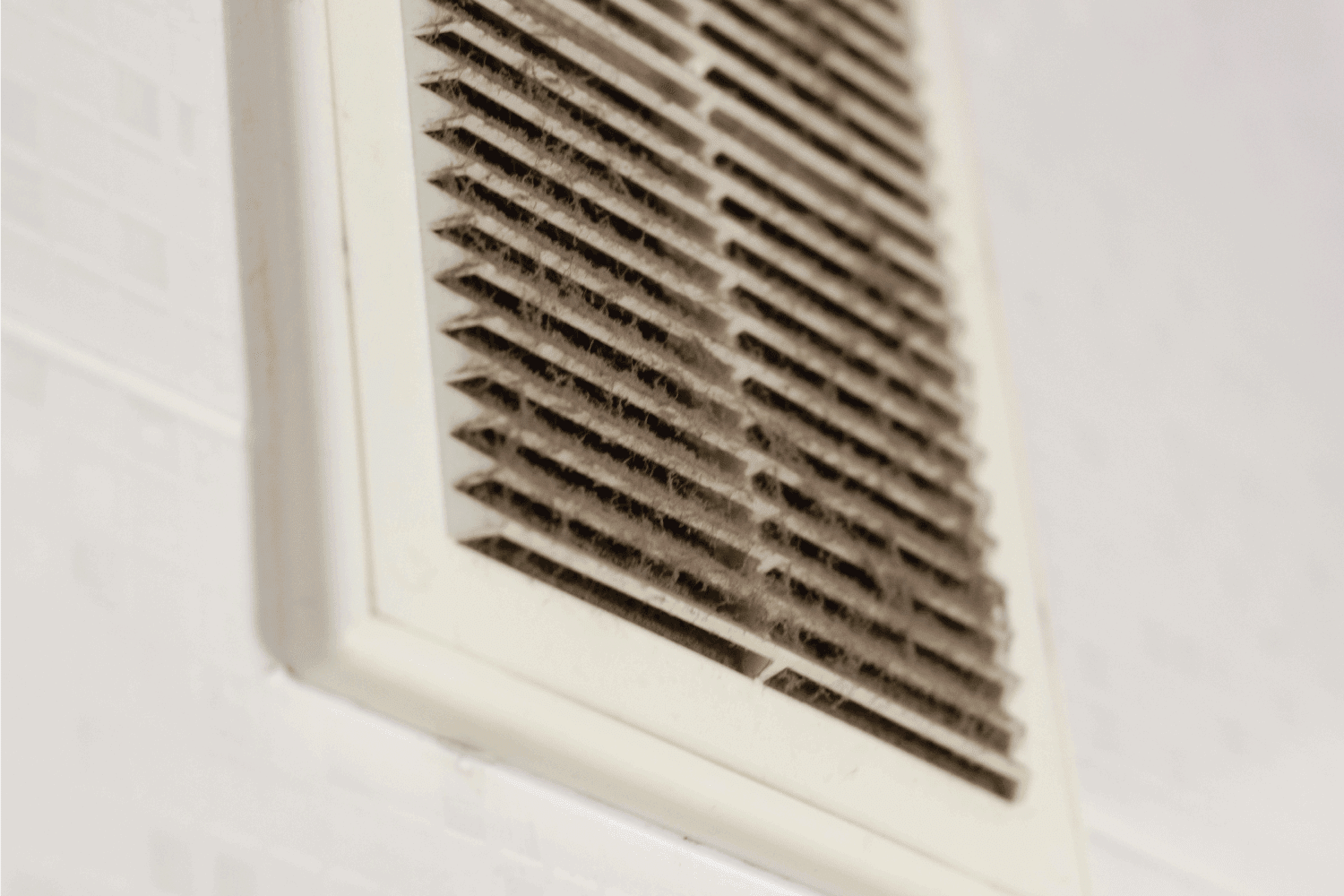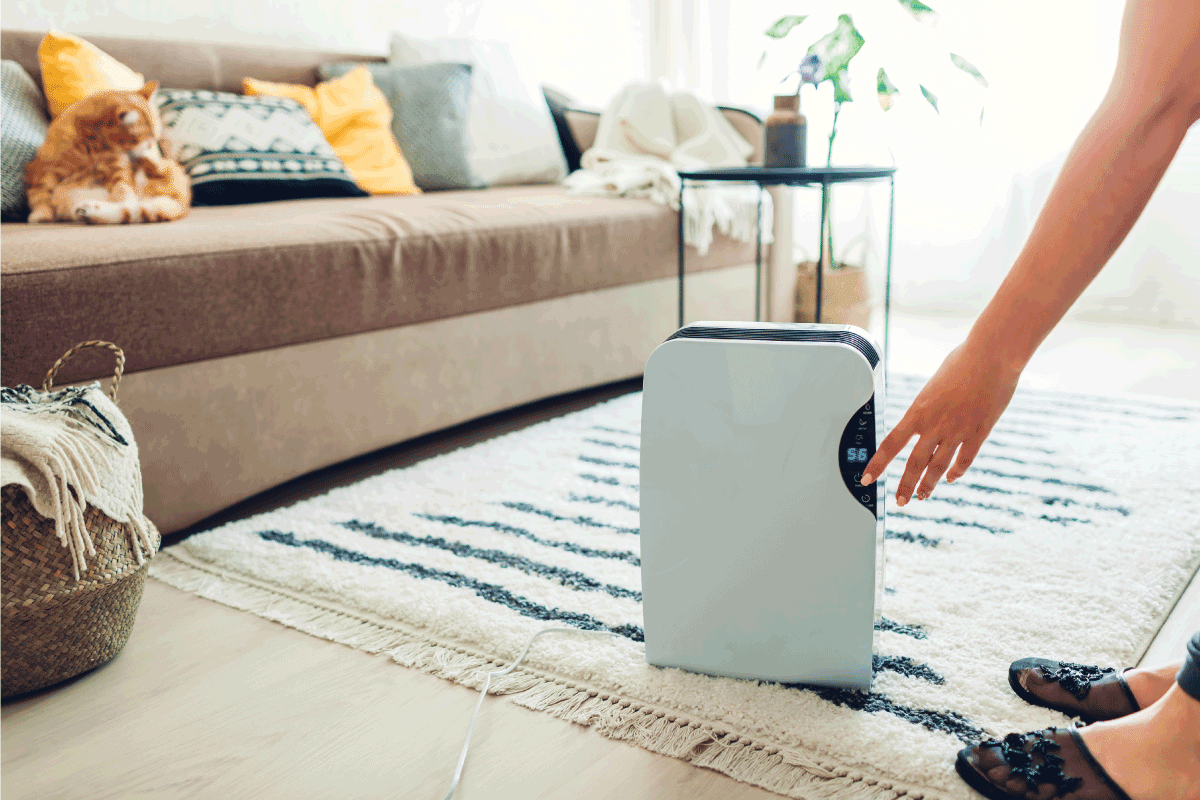Dehumidifiers are a great addition to your home. They can help lower the moisture level of the air circulating inside the house. However, if you do not appreciate the warm air coming from your dehumidifier, you're probably wondering how you can vent it. We've researched this topic to help you and here is the answer.
You can vent your dehumidifier via two through-the-wall options; by venting the air into another room you want to warm or by directing the air outside.
To vent your dehumidifier, follow these steps:
- Have a vent attachment that fits with your type of dehumidifier.
- Connect the vent attachment to your humidifier.
- Place the vent through the wall.
- Attach the other end of the hose to the vent.
It may seem overwhelming, but don't worry! We will go into further details about how you can vent your dehumidifier so stick until the end of this post to learn more. With that said, let's get right into it!
How To Vent Your Dehumidifier
Moisture is always present in the air we breathe, even if we're inside our homes. When humidity level is high in a closed area, unwanted tenants at home such as molds and mildew start to take up their own spaces.
Good thing dehumidifiers were invented. This type of appliance helps lower the amount of water vapor present in the air by collecting the air and letting it pass through its condenser coils.
When humidity is high in our homes, we can suffer from several health issues such as asthma and allergy attacks caused by moist air. Our home's structure can be at risk, too. This is why getting yourself a dehumidifier is a good choice.
Although dehumidifiers can function without venting them, many prefer to do so. If you're planning to vent your dehumidifier, here's a simple guide that you can follow.

1. Prepare The Wall
Using your construction tools such as a drill or chisel, outline the part of the wall where you will place your vent. You can check the electrical and pipework outlines of your home to make sure that no pipes nor wires will be damaged during the process.
Once you are done outlining the part of the wall you will need to remove to make space for your vent, knock down the part using a chisel (if you are installing the vent in a brick wall). If you're placing it in drywall, you can use a blade to cut out the part of the wall.
2. Attach The Ducting Collar
After preparing the hole in the wall, connect the ducting collar to your dehumidifier. There are several ducting collars for different models and appliances so make sure that you are getting the right one.
On the side of your dehumidifier, you will find the inlet where you will connect one end of the ducting collar. Grab four screws and secure the collar into place.
3. Place The Vent In Your Wall
Once done installing the collar to your dehumidifier, attach the vent to your wall. Fit the vent frame into the wall and secure it using screws and a power drill.
4. Connect The Collar To Your Vent
Using a power drill, secure the other end of the vent hose in your vent. Fit the collar on the outer part of the vent's frame and screw the tabs to keep the collar intact.
Lastly, grab your foil strips to secure the outer edges of the vent.
Check out this dehumidifier on Amazon.
Benefits Of Having A Dehumidifier
Ever wonder what else can a dehumidifier bring to the table besides getting rid of water vapor in the air? If you are planning to get yourself a dehumidifier, here are some things you might want to take a look at to help you decide.

Health Benefits
When the humidity level at home is high, air particles that can survive in moist spaces can trigger some health issues such as asthma, allergy, and skin irritation. When you have a dehumidifier running, the air becomes less moist, thus, preventing allergens to travel through air.
Structural Benefits
Aside from its health benefits, dehumidifiers can also protect the structure of your home. When moisture builds up at home, molds and mildew can weaken the parts of the house where they are growing.
With a dehumidifier's ability to lessen the water vapor in the air, molds and mildew cannot grow and damage the house.
Comfort And Healthy Air
Not only do dehumidifiers reduce structural damage and health hazards due to moist air, but they can also improve the air circulating within the home. When the air quality is good, the more comfortable the body becomes.
This is why it is okay to sleep in a room with a dehumidifier. The only downside of having a dehumidifier in the bedroom is it can interrupt your sleep due to its noise.
See this portable dehumidifier on Amazon.
Should I Vent My Humidifier?
It is not always necessary to vent your dehumidifier. In some cases, you can skip the vent installation and let your dehumidifier work on its own. This is often the case for portable dehumidifiers, but if you are using a dehumidifier for the whole house, you will need to install ducts.
Where Should I Place My Dehumidifier?
Because of its several benefits, humidifiers are becoming more and more essential. Aside from lowering the humidity level in our homes, it also provides comfort when properly placed in the house, but where exactly should you let your humidifier sit?
Since dehumidifiers help get rid of water vapors, it is best to place them where the humidity level is often high. You can use a hygrometer to test every area of your room to find out the best place where to put your unit.
Most homeowners place their humidifiers in the basement and in the bathroom since these areas are often cool.
In addition, it is not recommended to place the humidifier where there is no proper air circulation. Furniture and walls can also prevent the dehumidifier from delivering the best results.

Can You Let A Dehumidifier Run All The Time?
Although it is good to keep the humidity in the air low, running the dehumidifier all the time can make the air feel dry.
When air is too dry, health issues can also arise such as:
- Sore throat
- Dry and sore eyes
- Skin irritation
- Nosebleed
- Dehydration
- Dry sinuses
- Dry lips
- Asthma and other respiratory ailments
Also, exhausting your dehumidifier can increase your energy consumption, that's why it is recommended to only let it run for 12 hours a day. This time period is enough for your unit to lessen the humidity in the air.
Sometimes if the humidity level at home does not decrease despite letting the dehumidifier work for 12 hours, you already need to check other factors. The problem might not be coming from the dehumidifier's efficiency, but due to doors or windows that are not properly closed, or because of a plumbing problem that needs your attention.
Which Is Better: Whole House Dehumidifier Or Portable Dehumidifier?
The best choice between a whole house and a portable dehumidifier depends on your preference and the size of the area where you need a dehumidifier.
If you are intending to control the humidity in a specific room and do not want to dig a hole in your wall for a vent, then you can just use a portable dehumidifier, but if you have a home with existing ducts or the house is too large for a portable dehumidifier to work on, a whole house dehumidifier would be a great choice.
Can I Use A Dehumidifier And Air Purifier In The Same Room?
Absolutely! While a dehumidifier lowers the humidity level of your home, the air purifier purifies the air. With the two units working side by side, the air quality circulating in your home will improve.
The air purifier will not hinder the humidifier from working efficiently, and the other way around that's why it is such a perfect combination if you want healthier and fresher air at home.
Just remember that you need to plug the two units in different sockets to prevent overloading since dehumidifiers consume a lot of electricity.

In Closing
Venting your dehumidifier is a good practice if you do not want the warm air coming from it to circulate in the same area. You can either direct the warm air to another room or outside using vents. Just do not forget to practice safety precautions when installing the vents.
Before you go, don't forget to check out these posts, too!


